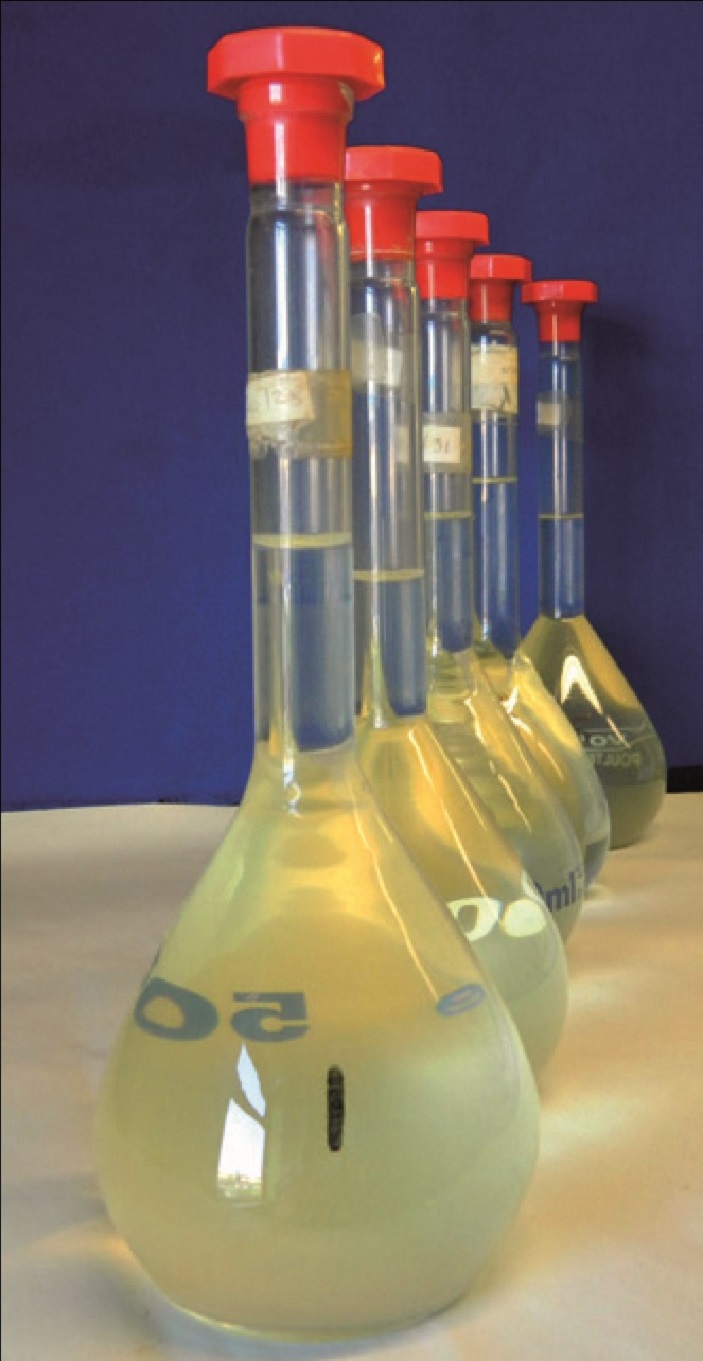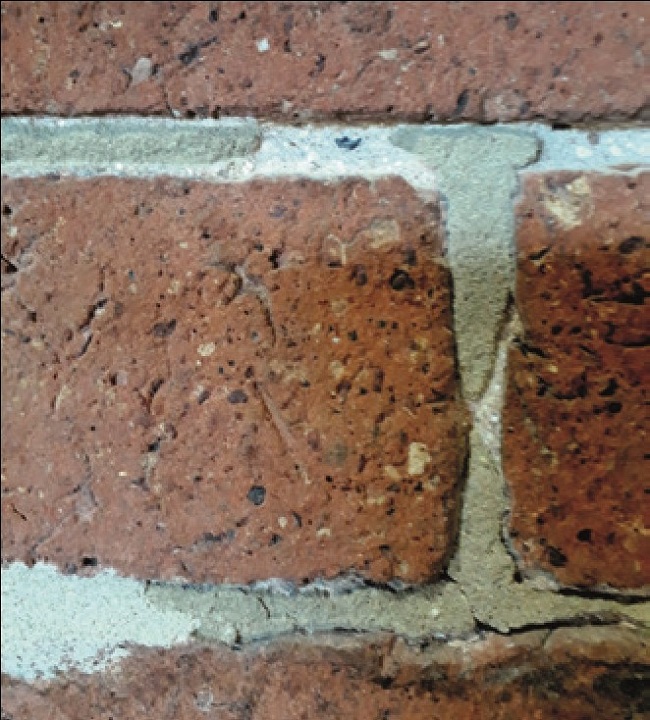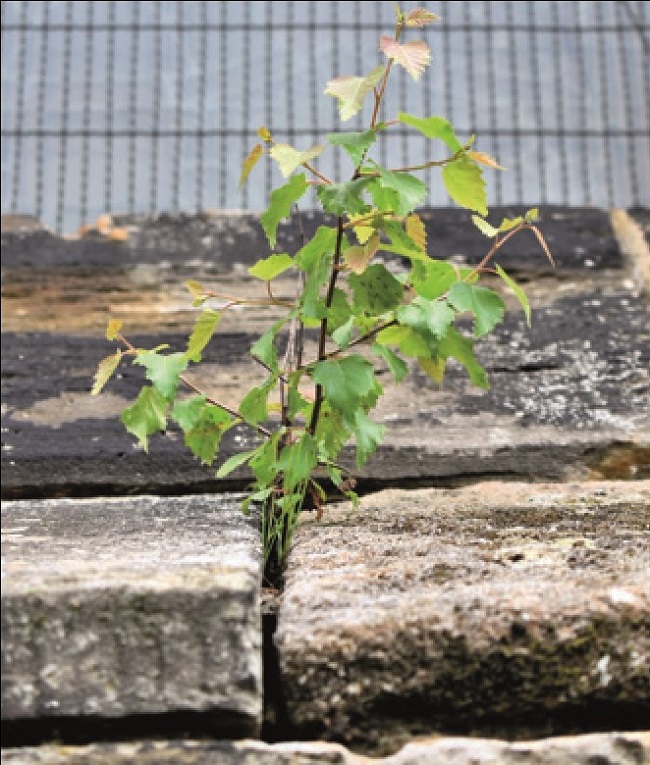Mortar Analysis
A View from the Lab
 |
||
| Mortar investigations of some form are always required prior to carrying out masonry repairs or repointing. (All photos: Mike Barham Kiwa CMT Testing unless otherwise stated) |
Mike Barham
In the field of conservation the importance of materials analysis is well established. Identifying the composition of heritage building materials informs sympathetic repair and restoration of historic buildings and avoids damage arising from the use of incompatible materials. The necessary degree of investigation varies depending on the type and scale of a project, but laboratory testing is frequently involved.
For the assessment of the mortars used in the past, several laboratory methodologies are available, and some of the more common ones are outlined in the table below. The essential question is, precisely what level of information is required from the testing? Answers to this question allow a planned approach and scheduling of appropriate procedures.
Achieving the requisite level of information often involves a combination of complementary techniques balanced by a pragmatic, cost effective approach when tailoring laboratory testing to objectives.
OBJECTIVES
Testing is often required to inform ‘replication’ of the original mortar for repair or restoration works. Given suitable samples and supporting information, laboratory testing will indeed yield pertinent information but, use of this as a basis for a mix design is beset with pitfalls and difficulties. Any analytical results will relate only to the mortar sample(s) at the specific time of the testing undertaken, and there is no guarantee that the samples represent the mortar as a whole, or its condition at any particular time in its service life. The fact is that, in many cases, the current condition of the mortar may well differ significantly from that mixed and placed in the original construction or used for past repairs. Certain factors may have impacted the mortar over time, from changes in weathering/exposure conditions to leaching and depletion of lime binder with re-deposition elsewhere in the mortar fabric and the effects of adverse chemical reactions arising from environmental or other circumstances. It is mostly a question of ‘best endeavour’ using test data in conjunction with other facts and consideration of wider issues.
Where a mortar has failed, replicating the problem would be pointless. In this case the objective should be to identify how and why it failed in order to improve the durability of the masonry, extending its service life. The focus should be on enabling the specification of a mix that will help mitigate the problem.
Background information is always important when determining a test schedule, but particularly where failure has occurred. Viewed in conjunction with existing information, laboratory data should provide a fuller understanding of the problem and assist design of a repair mix. Modifications may, for example, involve adjusting aggregate grading or mix composition.
Often the approach involves preliminary testing followed by further laboratory work, each phase providing the rationale for subsequent testing, as illustrated by the following two case studies.
CASE 1: REBUILDING OF DAMAGED GRADE II LISTED ARCHES – NORTH YORKSHIRE
COMMON LABORATORY ANALYSIS TECHNIQUES |
|
METHODOLOGY |
INFORMATION YIELD |
Initial visual examination + basic |
Extent of carbonation/reversion (indication of whether air lime has fully cured), assessment of colour, indication of porosity |
X-ray diffraction (XRD) + supportive chemical analysis |
Confirmation of binder (eg lime or cement); – if lime, its type (air lime, natural hydraulic lime, lime modified with additions to impart ‘chemical set’ or improve hardness), calculation of indicative mix proportions, identification of contaminants, reaction products etc |
Aggregate separation / recovery / examination and particle size distribution (PSD) via sieve analysis |
Details of basic aggregate type(s) and ‘grading envelope’ |
Petrographic examination by thin-section microscopy |
Detailed confirmation of aggregate composition, overall binder condition and distribution, detailed information relating to effects of weathering and/or adverse chemical reactions, confirmation of the form of lime binder, presence and type |
Biological testing (where plasters and mortars contain animal hair) |
Confirmation of the presence/absence of ‘active’ anthrax |
Mortar testing was required to confirm the binder type, mix composition and details of aggregate composition from samples supplied to the laboratory, to enable the mortar in the rebuilt sections to match the existing mortar of the surrounding areas. Procedures included acid digestion of the binder, recovery of the aggregates and grading. Initial review of results noted a relatively high binder content and abundant lime inclusions within the sample. Since acid digestion cannot distinguish between lime in the binder and in the aggregate, further testing was necessary to identify any presence of limestone aggregate, and to allow the mix composition to be adjusted accordingly. A thin section of the mortar sample was therefore prepared for petrographic examination under the microscope.
The examination confirmed the binder as a high calcium air lime and provided the following information regarding the aggregate:
• the composition was mainly a natural quartz sand with other minor components, including coal, coal ash and clinker as well as limestone fragments
• the shape and characteristics of the natural sand particles indicated a river bank, dredged or possible beach source.
Thin section microscopy also revealed that while some of the limestone fragments had been burnt (indicating that they were residual fragments of the stone originally used to make the binder), others had not been. The inference was that a quantity of crushed limestone had been purposefully added to the aggregate, probably as a carbonation aid to speed up initial hardening of the mortar. The thin section was therefore subjected to ‘point counting’ to quantify the limestone present within the aggregate, enabling correction of the mix proportions and avoiding over estimation of the binder. This gave an ‘effective’ binder content and the repair mix design could then be adjusted.
CASE 2: RESTORATION OF A 13th-CENTURY GRADE I LISTED CHURCH – LINCOLNSHIRE
 |
||
| Historic mortar samples including natural air lime (centre rear) and a range of pozzolanic mortars. |
This project included analysis of mortar samples from internal and external locations. Information supplied with the samples confirmed that the church had undergone restoration works in the latter part of the 19th century. The corresponding test schedule included visual examination, indicative tests, XRD, chemical analysis and aggregate separation, examination and grading. Findings confirmed that two different types of mortar had been used, both contained high calcium air lime but one had been modified with pozzolans to impart hydraulic properties, as set out in the table below.
 |
||
| Lime extracted into solution for calcium oxide (CaO) determination. |
Leaching and local re-deposition of binder components were identified within one sample of the air lime mortar, indicating that the corresponding mortar joints had been affected by water percolation.
Testing also revealed a difference between two samples of pozzolanmodified mortar. Although each binder was made from magnesian limestone, one sample was friable and weathered, the other relatively hard. Both contained ash but only the harder one contained the pozzolanic components expected, mullite and hydrocalumite. This highlights the effects of weathering as the mortars were probably of similar strength initially, but the weathering sustained in one instance would have been sufficient to cause the loss or alteration of soluble or reactive components, resulting in the now friable nature of the mortar. This information enables the specification of a mix designed to reduce porosity or alternatively, the use of suitable barriers, such as lead weatherings on wall heads and cornices, to prevent future leaching which would damage repointed joints.
This case also illustrates the advantages of using complementary techniques in second phase testing. Specific methods may well provide qualifying information (for example trace indicators of pozzolanic components may still be detectable) where a fuller understanding is needed to inform mix design or other measures to mitigate post restoration weathering.
AVAILABILITY OF HISTORIC MATERIALS
When trying to match historic materials with modern equivalents, it is important to consider whether they really are equivalent. For example, certain samples were found to contain a pozzolanic component, possibly furnace bottom ash (FBA). However, if sourcing FBA for use in a repair mix, caution is needed as the characteristics and properties of current FBA are likely to differ significantly from that produced in former times. Variables include the type of coal/fuel burnt, contaminants present, burning temperatures/conditions, age and storage conditions prior to use, all of which can impact quality and performance.
|
SAMPLE TYPE A: |
SAMPLE TYPE B: |
BINDER |
High calcium non-hydraulic lime binders probably in the form of lime putty |
Lime binder made from a magnesian limestone and mixed in dry hydrate form; large lime inclusions in some samples indicated ‘balling’ of the hydrate during mixing |
ADDITIVES |
None |
Pozzolanic additives including a mixture of ash (possibly furnace bottom ash, FBA) |
AGGREGATE |
Fine natural quartz sand with added crushed limestone fragments |
A small proportion of fine quartz sand and, on occasion limestone, coal and ash |
Matching historic types of lime can be similarly difficult. There will have been variations between limes at the time of construction and this is also the case with modern limes. Care should be taken when cross referencing historic classifications as there is often a marked difference with perceived current counterparts, particularly with hydraulic lime. Modern versions generally give higher (compressive) strengths and are denser in comparison. These issues may have a bearing on mix design.
SAMPLE DOCUMENTATION
Because background information was communicated prior to analysis, the lab technicians knew the period of the mortar and were better able to tailor the analysis accordingly. It came as no surprise, for example, that some of the samples were confirmed as pozzolan modified mortars as this was consistent with other church restorations carried out in Victorian times, a period where the effects of ash/coal additions would have been known. Reporting was correspondingly more informative.
The scope of reporting on samples when information is not forthcoming is inevitably restricted. I would always encourage a more collaborative approach with sharing of information to maximise outcomes. Ideally this philosophy would apply throughout a project right through to the person wielding the hammer and chisel, core drill or pointing trowel.
 |
 |
| Cement pointing which has failed revealing original lime mortar beneath. | The weather-beaten window sill of a church in Stirling: the original mortar is not always the most appropriate one. (Photo: Jonathan Taylor) |
Finally, the integrity and validity of laboratory testing relies, ultimately, on the availability of suitable representative samples of the mortar(s) and a documented sampling plan. Mortar samples should be obtained via suitable methods including club hammer and chisel penetrating well into mortar joints with careful recovery of sections or pieces, removal of whole masonry units and recovery of mortar across whole bedding and perpend joints or dry overcoring. Minimum sample mass for basic analysis is 100g and, for more extensive testing, approximately 250g is required. Samples should be sealed in suitable containers, labelled with location details. Record photographs and site sampling observations are invariably useful and should be included wherever possible.
There is much to learn. Perhaps the most important objective of all is being able to conclude a project moving to the next piece of work sound in the knowledge that we have given our collective best.
Acknowledgement
The author wishes to acknowledge a cumulative debt to Bill Revie for his input and assistance over the years demonstrating, on many occasions, his seemingly inexhaustible knowledge in addition to carrying out key elements of testing.



